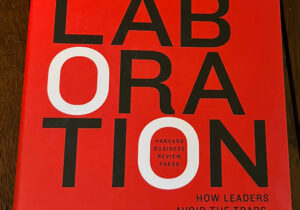The Power of Strong Collaborations

Biomedical science is no longer primarily conducted by brilliant individuals running their own labs and writing paper after paper using the same methodology that they have perfected over the course of their training and career. Even the seemingly simplest of projects likely requires use of another lab’s equipment or model, or utilizes multiple Core facilities and services. Some may see this approach as diluting the importance of each contributing author, but in fact it enables a far greater influence and benefit of any one individual’s work.
There are many reasons why successful scientists collaborate:
– It’s a chance to learn new scientific approaches and access new techniques, models and equipment.
– You can greatly expand your publication record. Although a series of middle author manuscripts won’t make or break a tenure package, it certainly demonstrates a collaborative scientist who fits well within the local research community. Tasks that seem routine to one lab may represent a critical control for a manuscript from another group and earn a spot on the authorship list. Likewise, engaging other people and their specialty area will allow you to level-up your own work and submit more compelling stories to stronger journals.
– Reading and editing the work of other people is a great way to learn better writing skills for manuscripts, grants and posters. Many useful style tips and tricks can also be gleaned from the way other people edit our own work. Once we leave the trainee state the opportunity to have someone thoroughly red-line our work diminishes and it is a gift when it happens. In academia, editing is how we show that we care!
– You can share the highs and lows. An academic career entails a lot of rejection and it can be hard not to internalize a rejected paper or a triaged grant. Writing and submitting with other colleagues that you know to be brilliant can help to convince you that a poor score really may be due to the vagaries of the review process rather than a personal attack or judgement. Two (or three) heads are better than one in planning a new line of attack and the celebratory champagne also tastes better when shared.
There are several ways to increase your collaborative reach:
– First, do your research. Find local experts and contact them directly. Invite them (or a trainee from their lab) to present data at your lab meeting, or offer to present something to their group. Be clear about what you need and what you will offer in return such as authorship, funding, or future joint grant applications – particularly if what you are asking for might be costly in time or research funds.
– Graduate students and post-doctoral fellows are a great way to expand your reach. Serving on committees will introduce you to work that is going on in other labs and you may be able to offer your own expertise to enrich their projects.
– Internal seminars are a great place to meet new colleagues. Ask questions of the speaker afterwards, introduce yourself, and find your shared interests.
Some collaborations may only last as long as it takes to get a manuscript published, whereas others may last for years. But remember, if the grant application is successful you will be stuck with that person for years so a functional working relationship is just as important as the science itself. And sometimes, just sometimes, a simple scientific question results in manuscripts, funding, and friendship.
More Resources
Connecting Through Poster Sessions
Navigating Academic Relationships
Paper-Writing Checklists To Prevent Headaches Down the Road






2 Comments
This is very true. Science should be team sport. Science needs to go beyond being a competitive sport to a collaborative sport.